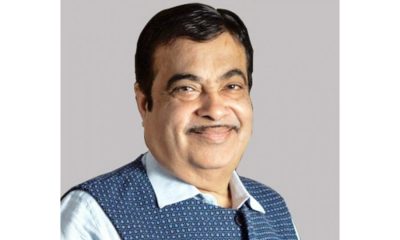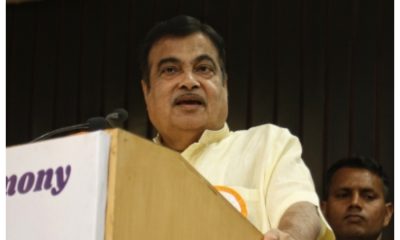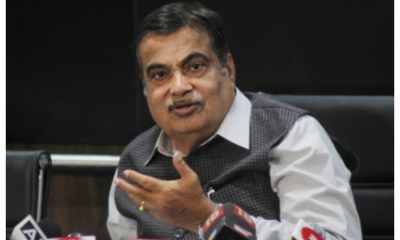National News
Gadkari promises 8-hr travel between Delhi and Srinagar by 2023
Union Minister for Road Transport and Highways, Nitin Gadkari has promised to reduce the travel time by car between New Delhi and Srinagar from 24 hours to just 8 hours, while the drive between Jammu and Srinagar in December 2023 would be of an incredible four hours.
Addressing a public meeting at Doda after laying foundation stone for 25 surface communication projects, with aggregate length of 259 km worth Rs 11,721 crore and announcing five new highways in the Union Territory of Jammu and Kashmir, Gadkari on Wednesday said the construction of the four-lane national highway (NH-44) from Jammu to Srinagar would be completed in the next 24 months.
After completion of the ongoing road projects, the Union Minister added that Jammu and Srinagar would get three road corridors that are currently in different stages of execution. “Srinagar-Jammu national highway (NH-44) will be completed within two years and the travel journey will be reduced to just four hours,” he said. This would mean a total driving time of eight hours from Delhi to Srinagar.
Significantly, in his first meeting with the Jammu and Kashmir politicians in over two years on June 24, 2021, Prime Minister Narendra Modi had emphasised on reducing Kashmir’s distance from Delhi-Dil ki duri aur Dilli ki duri. Gadkari’s ambitious project alongside green-lighting the rail linkage between Srinagar and Delhi in the next two years would be a veritable game changer in the process of Kashmir’s physical integration with the rest of India.
The Union Minister added that the second road corridor between Jammu and Srinagar through Doda-Kishtwar (NH-244) and the third one through Akhnoor-Rajouri-Shopian (Mughal Road) would serve as alternate arteries and connect two hilly wings to the two capital cities.
Referring to the 650-km Delhi-Katra express highway, Gadkari said the work had been distributed in different packages and already started on 16 packages in Punjab and Haryana. “After the completion of the Delhi-Katra express highway, the travel time between major cities, including Delhi-Amritsar, will be four hours, Delhi-Katra six hours and Delhi-Srinagar eight hours. This is my promise and it will be fulfilled,” he said.
The Union Minister said work was also under various stages of completion on the 1350-km long Delhi-Mumbai expressway which would reduce the travel time between India’s political and financial capitals from 24 hours to just 12 hours. It is estimated to be completed within the expenditure of Rs 90,000 crore. He said that Delhi-Chandigarh, Delhi-Dehradun, Delhi-Haridwar and Delhi-Jaipur Road journeys would be covered in just two hours.
As regards the four-lane highway between Jammu and Srinagar, Gadkari added that work was going on speedily on the last two packages. While 85 per cent of work had been completed on the 95-km long Jammu-Udhampur-Nashri section (which includes a 10-km long tunnel), the 60-km section between Nashri and Banihal would be completed by December 2023.
These projects, which are strategically important for the swift movement of defence forces along with the agricultural, industrial and socio-economic progress of the region, will provide all-weather connectivity between Jammu and Kashmir.
The projects will connect all major roads leading to various district headquarters and will help in the generation of employment and self-employment opportunities.
Making a significant announcement, the Minister said the road communication projects worth Rs 1,00,000 crore-equal to the total expenditure on 1350-km long 8-lane Delhi-Mumbai Expressway-would be executed in Jammu and Kashmir in the next two years. Tunnels to the tune of Rs 50,000 crore were already under execution in the UT.
Gadkari’s yet another remarkable announcement came about a road, including a tunnel under the Sadhna Top, between Kupwara and Tangdhar (LoC) and a road, including a tunnel from Bafliaz (Rajouri) to Peer Ki Gali near Shopian, Kashmir. Once completed, these two arteries would provide 24x7x365 connectivity through the two hilly terrains.
“Four things water, power, transport and communication are imperative for the success of tourism and industrialisation, which will help in elevating poverty, creating jobs and boosting economy,” the Minister said, adding that the Centre was making all-out efforts to bring development and prosperity to Jammu and Kashmir.
Referring to the development of roads in J&K, he said when the BJP came to power in 2014, the total length of roads in Jammu and Kashmir was 1,695 km, which was expanded to 2,664 km by 2021. J&K, he said, was the only part in the country where tunnels worth over Rs 50,000 crore were currently being constructed. These include Asia’s longest road tunnel near Zojila on Srinagar-Kargil-Leh highway.
“I assure you that the infrastructure will be at par with the western European standards during the Modi government,” Gadkari said about the roads under execution and in the pipeline.
National News
Mumbai Accident: BEST Bus-Truck Collision On Aarey Colony Road Disrupts Traffic On 1st Day Of 2026
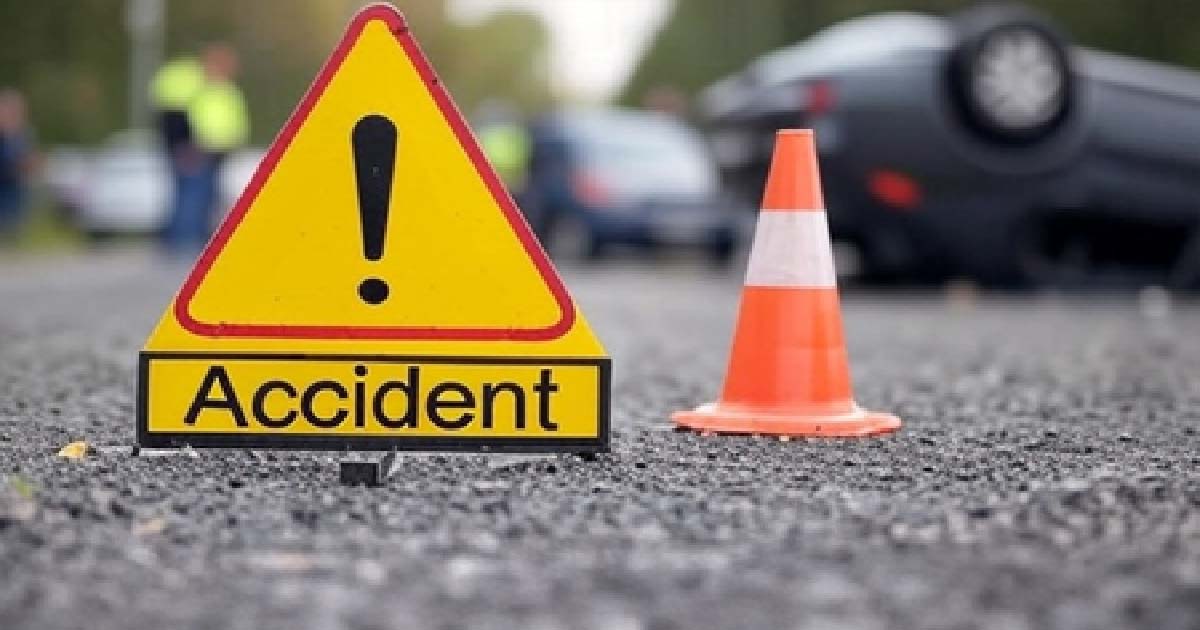
Mumbai: Traffic movement was briefly disrupted on Mumbai’s Aarey Colony Road in the early hours of Thursday after a BEST bus collided with a truck near Aarey Unit No. 16 (Dindoshi), on the first day of 2026. The incident occurred during the morning hours, leading to slow-moving traffic in the area for nearly an hour. No casualties or injuries were reported.
Videos of the accident surfaced on social media by local news portal, showing the bus and truck blocking a portion of the road as commuters navigated through the congestion. Traffic personnel were deployed to regulate movement and ensure normal flow was restored at the earliest.
The Mumbai Traffic Police confirmed the incident through a public update. “Traffic to Aarey Unit No. 16 (Dindoshi) is moving slowly due to a truck and bus accident,” the police said in a message posted around 9 am. An hour later, authorities announced that the situation had been brought under control, stating, “Now traffic is clear.”
The incident has drawn attention as it comes just days after a fatal BEST bus accident near Bhandup railway station on the night of December 29, 2025. In that incident, a BEST bus rammed into a group of passengers standing in a queue on Bhandup Station Road, killing four people and injuring nine others. CCTV footage of the crash had captured the moments when the bus ploughed into the unsuspecting commuters around 10 pm, a peak hour for office-goers returning home.
The bus involved in the Bhandup tragedy was a 9-metre air-conditioned Olectra electric bus operating on a wet lease for BEST and was plying on Route 606, which connects Nagardas Nagar and Bhandup station. Following the crash, Bhandup police and senior officials rushed to the spot, shifted the injured to nearby hospitals and cordoned off the road to prevent further mishaps.
Confirming the casualties in the earlier incident, Deputy Police Commissioner Hemra Singh Rajput had said, “Four people have died and nine others have been injured in the incident. The bus driver has been taken into custody.”
National News
Mumbai Weather Update For Jan 1, 2026: City Wakes Up To Unexpected Rains, Sees Clear Skies Later; Air Quality Improves With AQI At 115
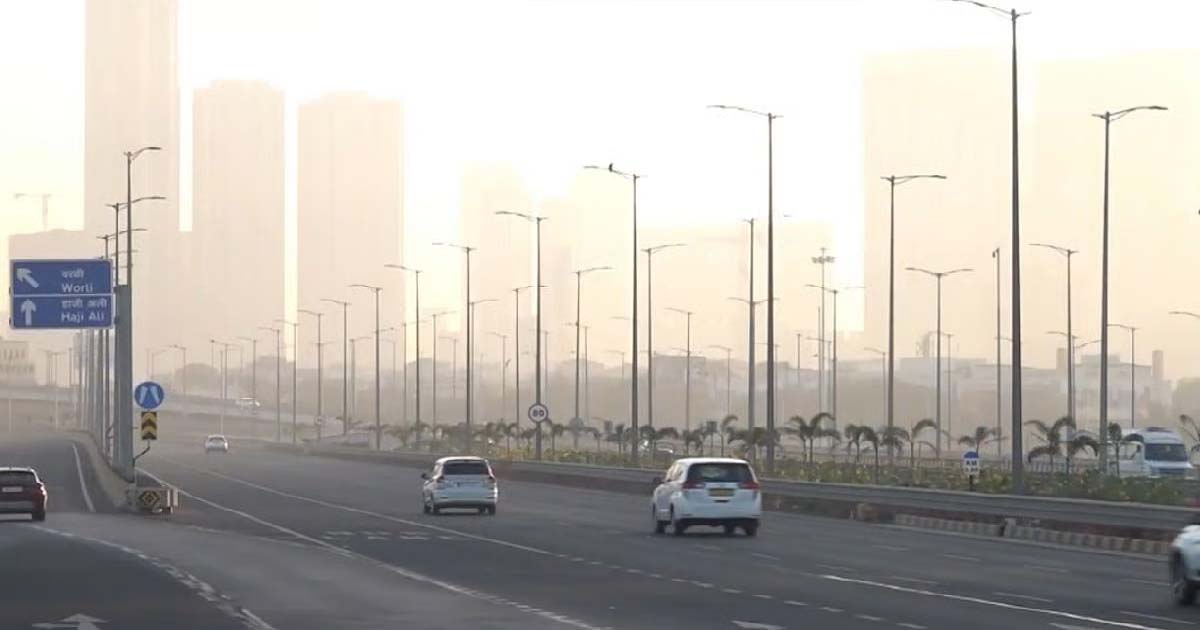
Mumbai: ushered in the New Year 2026 with an unexpected spell of rain, as heavy showers lashed several parts of South Mumbai early on Thursday morning. Many areas in SoBo witnessed intense rainfall at dawn, while the suburbs experienced light to moderate showers. As the morning progressed, the rain gave way to clearer skies, gentle winds and reduced humidity, creating a pleasant, almost winter-like atmosphere that offered residents a welcome respite from the usual heat and pollution.
The India Meteorological Department (IMD) forecast a partly cloudy sky with haze for the day, predicting temperatures to range between 16°C and 29°C. The sudden rainfall played a crucial role in improving Mumbai’s air quality, which had deteriorated sharply in the preceding days.
According to air quality monitoring platform AQI.in, Mumbai’s overall Air Quality Index (AQI) was recorded at 115 during the early hours of Thursday, placing it in the ‘poor’ category. However, this marked a noticeable improvement compared to the previous day, when air quality levels across several parts of the city had plunged into the ‘severe’ to ‘hazardous’ range. Such high pollution levels are known to pose serious health risks, particularly for children, senior citizens and individuals with respiratory or heart-related conditions.
The spike in pollution is largely due to construction dust and fine particulate matter. Mumbai is currently witnessing extensive government-led infrastructure development, including metro rail corridors, flyovers, coastal road extensions and large-scale road widening projects. Alongside these, aggressive private real estate construction has significantly increased dust emissions. Vehicular exhaust, especially during peak traffic hours at major junctions, has further worsened air quality.
Several localities emerged as pollution hotspots despite the improvement. Chembur recorded an alarming AQI of 293, categorised as ‘unhealthy’, indicating conditions that could adversely affect even healthy individuals. Deonar and Worli followed with AQI levels of 157 and 153, respectively, both falling in the ‘poor’ category. Colaba registered an AQI of 143, while Malad, a key residential and commercial area, recorded 140.
In contrast, many suburban areas saw substantial improvement, with air quality moving into the ‘moderate’ range. Borivali West recorded an AQI of 65 and Charkop stood at 72. Kandivali East (75), Santacruz (77) and Govandi (78) also reported moderate air quality, offering some relief to residents.
As per standard classifications, AQI levels between 0–50 are considered ‘good’, 51–100 ‘moderate’, 101–200 ‘poor’, 201–300 ‘unhealthy’, and above 300 ‘severe’ or ‘hazardous’.
Crime
Navi Mumbai Crime Branch Busts 3 Overseas Job Fraud Rackets In CBD Belapur, 154 Passports Seized, 8 Arrested
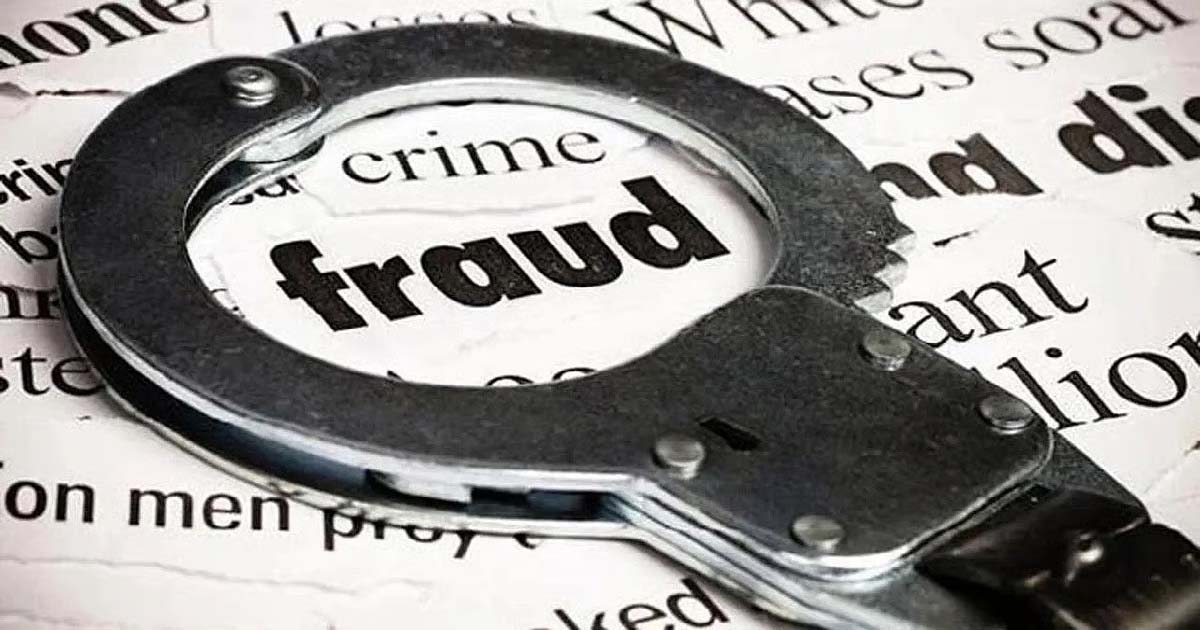
Navi Mumbai, Dec 31: The Navi Mumbai Police Crime Branch has busted an overseas job fraud racket by raiding three bogus HR and manpower supply companies in CBD Belapur that were allegedly cheating unemployed youth by luring them with foreign job offers without possessing the mandatory licence from the Ministry of External Affairs (MEA). During the coordinated operation, police seized 154 passports and arrested eight persons.
The action followed a tip-off received by MEA official Rajeshkumar, who alerted the Navi Mumbai Police after learning that several offices in CBD Belapur were illegally collecting money from job aspirants and falsely promising employment abroad despite lacking the required MEA authorisation.
Acting on the information, Crime Branch Unit-2, under the leadership of Senior Police Inspector Anil Patil, formed three teams and conducted simultaneous raids on December 26.
Police raided HR Global at Vishnu Complex in Sector 15, Vision Arabia HR Solution at Hilton Centre in Sector 11, and Bright Tech Marine Services at Sai Chambers.
During the searches, officers recovered 136 passports from HR Global, 18 passports from Bright Tech Marine Services, and several important documents from Vision Arabia HR Solution.
Investigations revealed that the owners and staff of all three firms were operating without the mandatory MEA licence and were illegally charging candidates while making false promises of overseas employment.
Accordingly, the Crime Branch registered a case at CBD Police Station under Sections 318(2) and 318(4) of the Bharatiya Nyaya Sanhita, along with Sections 10 and 24 of the Emigration Act, 1983.
The arrested accused include Rochak Joshi (30), Sachin Sathale (45), Amit Kadam (41), Devidas Dhangar (38), Sagar Chorat (33) and three others.
“The accused were running fake recruitment operations and collecting passports and money from candidates without any legal authority to send Indian citizens abroad for employment. We have seized a large number of passports and documents, and further investigation is underway to identify more victims,” said Senior Police Inspector Anil Patil.
Police said the exact number of people cheated by the racket is yet to be ascertained, and efforts are underway to trace victims of the fraud.
Meanwhile, the Navi Mumbai Police have urged citizens to remain cautious and verify the MEA licence of any overseas recruitment agency before making payments, warning that strict action will be taken against those involved in such fraudulent activities.
-

 Crime3 years ago
Crime3 years agoClass 10 student jumps to death in Jaipur
-

 Maharashtra1 year ago
Maharashtra1 year agoMumbai Local Train Update: Central Railway’s New Timetable Comes Into Effect; Check Full List Of Revised Timings & Stations
-

 Maharashtra1 year ago
Maharashtra1 year agoMumbai To Go Toll-Free Tonight! Maharashtra Govt Announces Complete Toll Waiver For Light Motor Vehicles At All 5 Entry Points Of City
-

 Maharashtra1 year ago
Maharashtra1 year agoFalse photo of Imtiaz Jaleel’s rally, exposing the fooling conspiracy
-

 National News1 year ago
National News1 year agoMinistry of Railways rolls out Special Drive 4.0 with focus on digitisation, cleanliness, inclusiveness and grievance redressal
-

 Maharashtra1 year ago
Maharashtra1 year agoMaharashtra Elections 2024: Mumbai Metro & BEST Services Extended Till Midnight On Voting Day
-

 National News1 year ago
National News1 year agoJ&K: 4 Jawans Killed, 28 Injured After Bus Carrying BSF Personnel For Poll Duty Falls Into Gorge In Budgam; Terrifying Visuals Surface
-

 Crime1 year ago
Crime1 year agoBaba Siddique Murder: Mumbai Police Unable To Get Lawrence Bishnoi Custody Due To Home Ministry Order, Says Report





